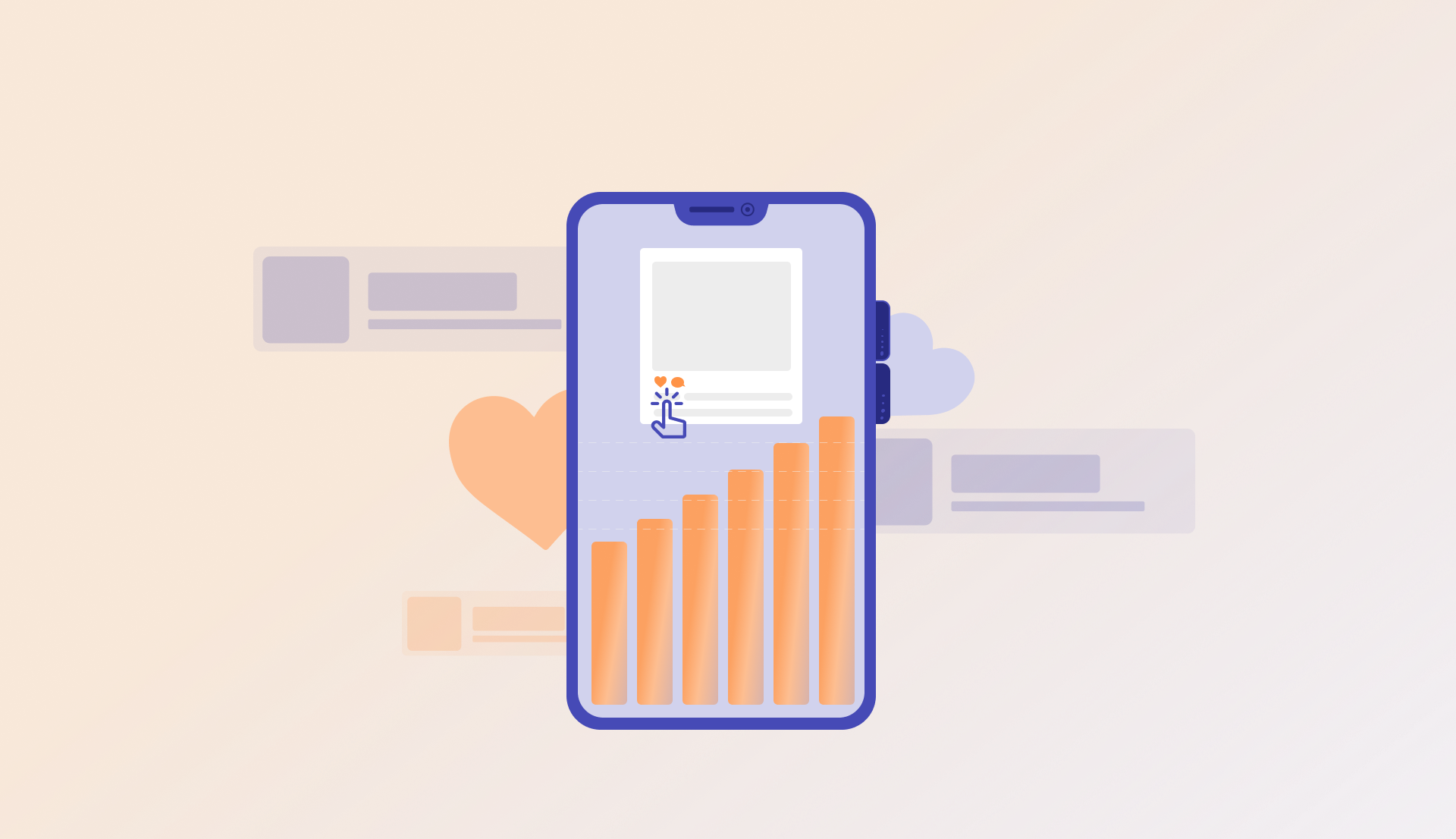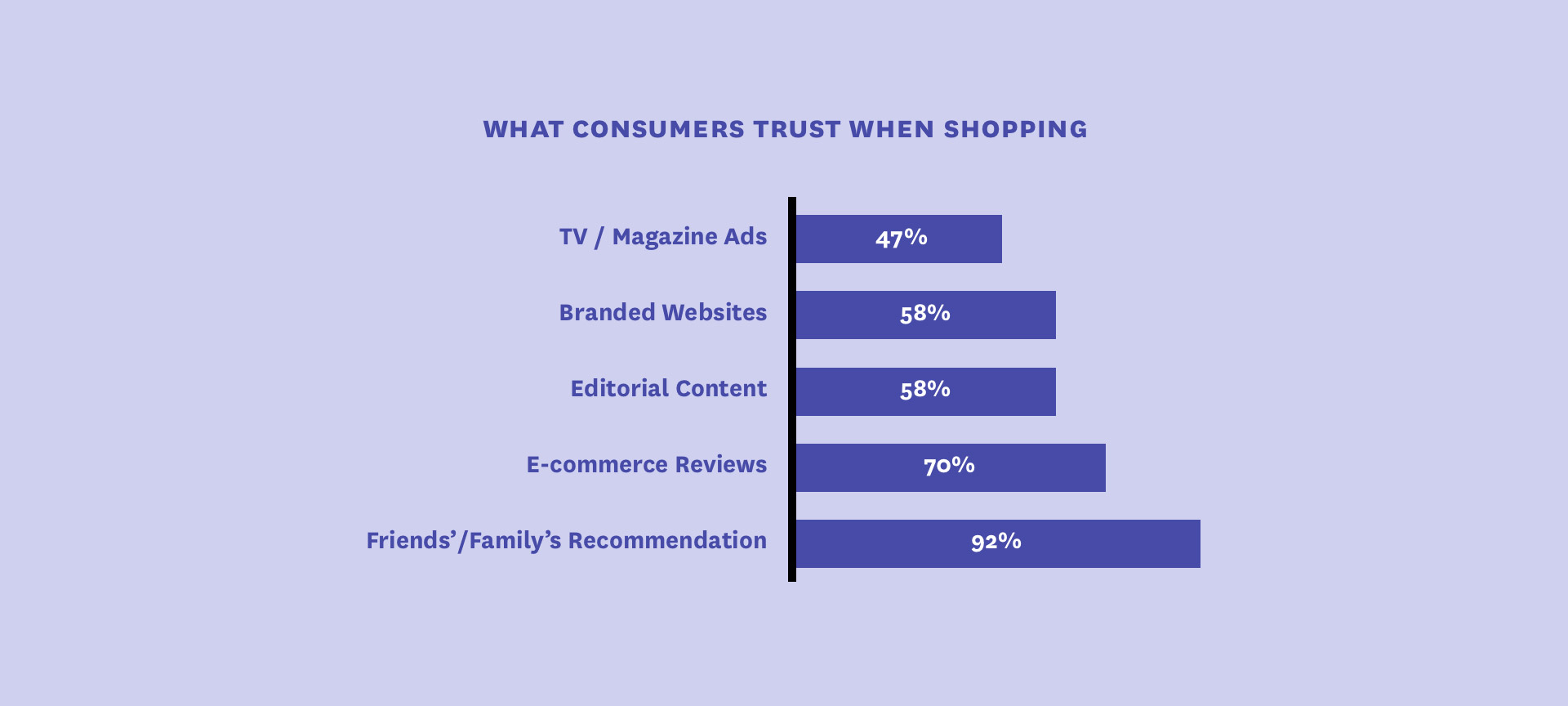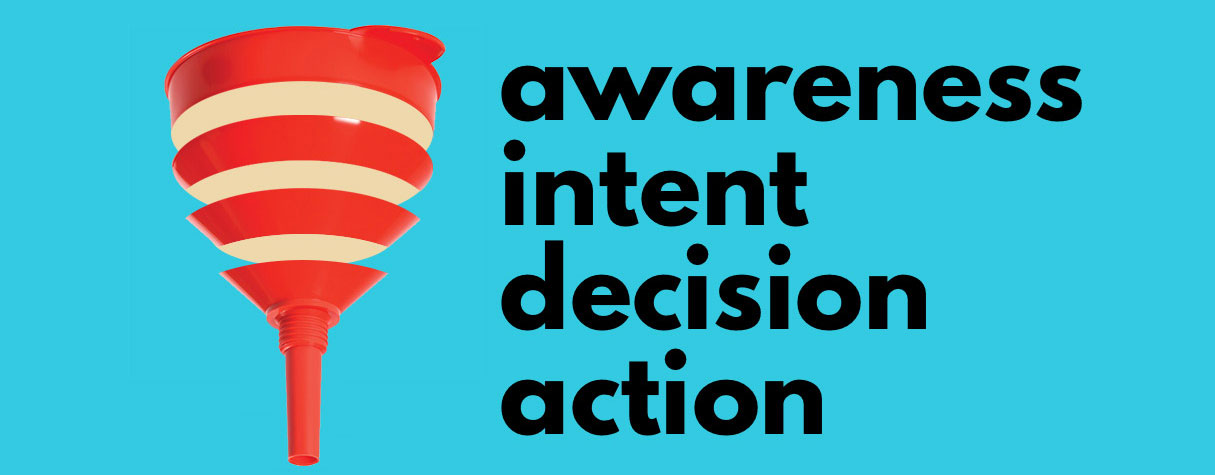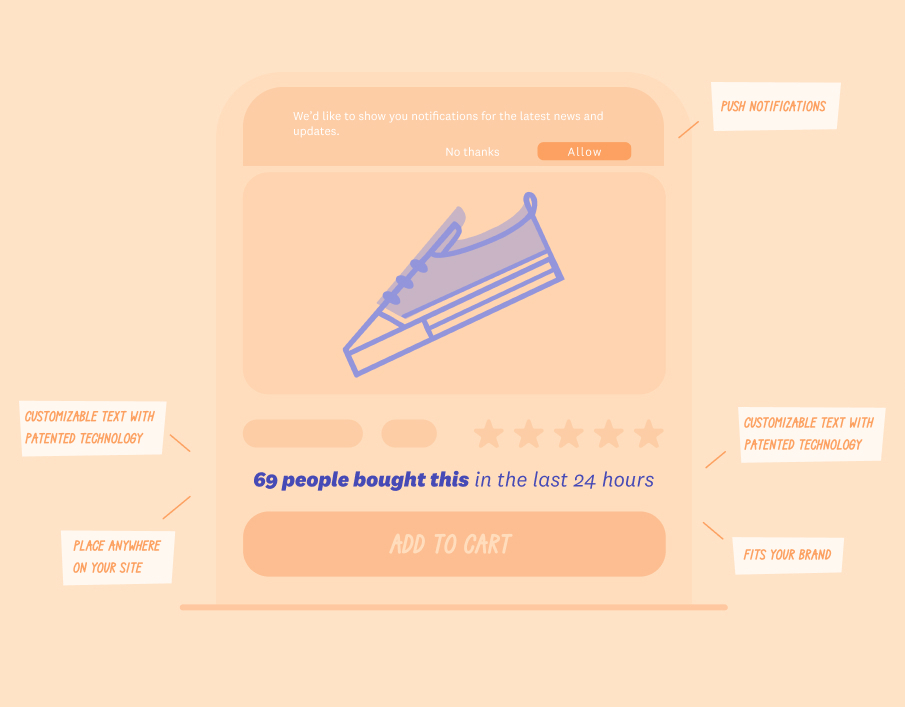Table Of Content

Push notifications, an essential part of your marketing strategy, are hard to master.
There are several reasons why your users opt out of your push notifications. Poor timing and irrelevant content to sales-related messages leave your customers and mobile app users uninterested.
As an e-commerce business owner, if your push notification opt-in rate is not increasing or is steadily declining, this post is for you.
Here, we address the common reasons for low open rates in push notifications and share expert tips on increasing your push notification engagement rate and click-through (CTR) rate.
Reasons for low open rates in push notifications
Do you use push notifications to engage with your audience but get swiped off from the app user screens? If yes, here are the common reasons for low open rates.
1. Purely marketing-driven or spammy messages
Push notifications with overly promotional language or irrelevant content deter users from engaging with your message. They would turn off notifications altogether, and the result would likely be low app engagement.
Example: A push message that says "Buy Now! Huge Sale!" every few hours is considered pushy and spam-like, lacks substance, and quickly turns users from engaging with future notifications.
2. Lack of personalization
Notifications that fail to address user behavior and their preferences miss the opportunity to connect personally. Generic messages are less likely to resonate, reducing users’ likelihood of opening them on their mobile devices or websites.
Example: A popup notification about a men's clothing sale to all users, including those who've only browsed women's apparel, shows an apparent lack of personalization and relevance.
3. Poor timing
We agree with what James Wilkinson, the CEO and co-founder of Balance One Supplements, has to say about sending mobile push notifications at the wrong time.
“If a notification arrives at an inconvenient moment, the recipient may not just ignore it; they could delete the app entirely—an even graver consequence.”
What’s the point of sending a flash sale notification in the middle of the night? Far from improving the retention rate, the user will ignore your message completely.
Example: Push notifications sent during the early morning or late at night may be overlooked or annoy users, leading to decreased open rates.
4. Overwhelming frequency
Do you know of the term notification fatigue? This happens when you send excessive alerts or push notifications to your user’s mobile devices (including Android and iOS devices) and smartphones.
They can be extremely distracting and annoying, prompting users to ignore or turn off your notifications.
For example, users receiving multiple notifications from brands within a short span (like three promotional messages in an hour) will likely lead to disengagement.
John Murphy, the owner of eBike Generation, observes, “We don't bombard our customers with notifications all the time. Instead, we focus on creating targeted push campaigns that matter to them.”
5. Lack of segmentation
Not segmenting users based on interests, past behavior, or demographics leads to irrelevant notifications. This lack of targeted messaging hampers push notification engagement rates.
Example: A user who frequently purchases treats for their dog from your online pet store receives notifications about cat toys. This reflects poor segmentation and reduces the likelihood of the message being relevant or interesting to the user.
6. Poorly crafted messages
Notifications with unclear, uninteresting, or confusing content are less likely to be opened. The success of a push notification heavily relies on its ability to grab attention with concise and compelling messages.
Let’s take the example of this push notification sent by an e-commerce brand for vegan makeup.
Reasons why this push notification is poorly crafted:
- A generic and overused approach, failing to specify what the sale is about, which products are on offer, or why it is relevant to the user
- The urgency created feels artificial and pushy and lacks meaningful personalization and context to resonate with users
- The message looks cluttered, the image of the brand is missing, indicating nothing about who sent it, and the CTA button is missing, making it hard for the user to find the offering straight away
7. Technical issues
Technical problems, such as notifications not displaying correctly on Android devices or failing to deliver to iOS devices, adversely affect the open rates.
Ensure back-end automation is set up correctly and notifications function properly across devices (web, iOS, and Android) and platforms for maximum user engagement.
For example, notifications that fail to appear for Android users due to compatibility issues with specific smartphone models or operating systems impact the user experience and open rates.
While much can go wrong with the push notifications in your marketing campaigns, there are some quick ways to fix the basics.
Optimize your push notification open rate with the fundamentals
1. Be clear
Gabrielle Marie Yap from CarnivoreStyle shares her experience of staying away from lengthy notifications that are hard to read and understand. The key to a successful push notification is to keep your message short and sweet.
She adds, “Use clear and simple language, and ensure that your notifications are easy to read at a glance.”
2. Measurable
Define the success metrics and benchmark for each notification. Whether it's driving revenue in an abandoned cart campaign or increasing customer engagement for your mobile marketing campaign, have a tangible goal to measure the effectiveness of your notifications.
The key metrics to watch out for in your push notifications are:
- Opt-in rate
- Open rate
- Conversion rate
- Click-through rate
- Revenue
3. Actionable
Make sure your push notifications prompt users to take specific actions, such as “Shop now,” “View Cart,” or “Pay now.”
Keep your CTA specific to the campaign you’re targeting them for through the web and mobile push notifications. Don’t confuse your audience with multiple CTAs in your text, image, and CTA button.
The CTA should be in sync with the user you’re targeting, and conduct A/B testing to understand the messages your users are most likely to click on.
4. Time-specific
Implement expiry dates for your push notifications, particularly for time-sensitive offers. Even for general announcements and schedule notifications, define an end date - 24 hours, one week, or a specific date, to maintain relevance and urgency.
Pro tip - Consider using countdown timers for time-sensitive offers to boost re-engagement and retention like healthcare retailer PharmEasy does in the push notification below.
How can you improve push notification open rates?
1. Target the right users
Targeting the right audience segment means understanding your user base and tailoring notifications to their interests and behaviors.
Trigger personalized and contextual push notifications to these segments based on parameters like page visits, events (previously ordered), geolocation, and time spent on specific pages.
For example, the e-commerce brand sends the push notification based on the product page the user visited before dropping off.
2. Time them right
The timing of your push notifications can make or break their effectiveness. You don’t want to send too many, but you don’t want to wait too long to be forgotten.
You must also ensure that the time you send push notifications is contextual and relevant. There is no point in sending the discount push notification for a particular skirt when the customer has already purchased the product.
Refer to the analytics and analyze the metrics to understand the patterns and behaviors of your users and when they are most active and likely to engage with your app or website. If your audience is global, factor in the time zones of your users before sending push notifications.
Pro tip: Gideon Rubin, the CEO of YourIAQ says, “Allow users to customize their push notification preferences. Allow them to choose the type, frequency, and content of notifications they receive based on their interests.
Customization makes users feel more in control of their app experience. Regularly update and refine your customization options based on user feedback to continuously optimize the relevance and effectiveness of notifications. Doing so leads to higher engagement rates and a more satisfied user base.”
3. Create audience-centric content
Your push notifications must provide value to your customers, be it discount offers, early access to new products, reminders, or informative content. Ensure the push notifications are engaging and tailored to capture their attention and prompt opens.
Sudhir Khatwani of The Money Mongers Inc. shares, “Personalization is where it's at. We've seen a real jump in people clicking when the notifications feel like they're just for them. It's about using their name, knowing what they've browsed, and making it personal.”
4. Use rich media like emojis, images, GIFs
Incorporate rich media such as emojis, images, and GIFs to engage your push notifications visually. They draw the reader’s attention, make the notification stand out, and increase the chances of being opened.
Plus, rich media extends beyond the usual text-based messages, providing more creative space to showcase offerings to your audience. They create a more substantial impact and increase click-through rates.
Lisa Richards, the CEO of the Candida Diet, shares her experience, “Incorporating interactive elements streamlines users' progress towards desired outcomes: for instance, the inclusion of buttons such as 'Add to Cart,' 'View More,' or 'Dispute' directly within a notification.”
This strategy facilitates immediate user action—eliminating the need to navigate an entire application—and guides them promptly toward specific objectives.:
A case in point is the push notification from BlueStone, an e-commerce jewelry platform, announcing a discount on diamond prices.
However, be careful not to go overboard with the feature. Rich media doesn’t necessarily translate to adding value all the time. Plain text creates more impact for some messages than a rich push notification if it delivers the message clearly.
5. Personalize messages using dynamic content
Personalized push notifications have higher open rates as they cater directly to users’ interests or needs.
Use dynamic content that records the user’s profile attributes. For instance, if you know a user last searched for a pink skirt in the app, you can reference that specific skirt in your message.
6. Keep experimenting
There’s no fixed push notification template that works.
For an effective push notification strategy, experiment and conduct A/B tests for different types of push notifications to understand which works best for which audience segment.
For instance, send push notifications at different hours of the day or try out new content formats or messaging styles to see which gets the most engagement. Enticing new users with offers or free shipping in your message is a good push notification strategy.
Summing up the essentials for increasing push notification engagement rates
Whether web push notifications or app push notifications, improving push notification engagement boils down to a few basics. They include:
- Target the right audience
- Time your push notification
- Create an engaging copy and personalize it for the reader
- Add an actionable CTA to drive engagement and click rates
- Use rich media to convey your message at a glance
The goal of a push notification strategy isn't just to get users to reopen the app but to engage them effectively, increase retention, and get more revenue from your users.
The best part is that push notifications align with your digital marketing and email marketing campaigns, nudging the user to act on your mobile app or website. But the success of your push notification strategy also depends upon the push notification software you use. With Fomo not only you can send push notification to your customers but also showcase social proof on your website to increase sales and trust. Sign up for a demo today and let us show how you can leverage social proof and push notifications to scale your business.





 1.svg)
 1.svg)


